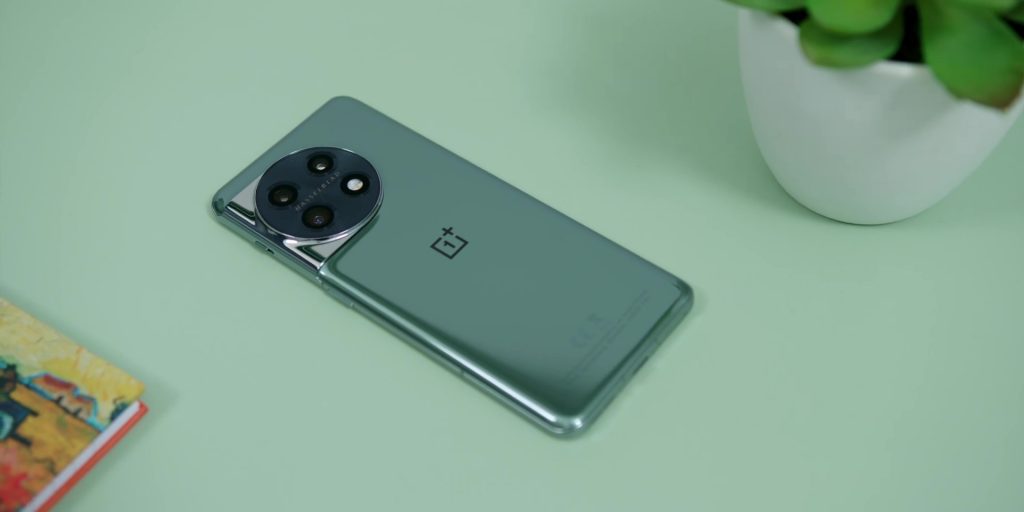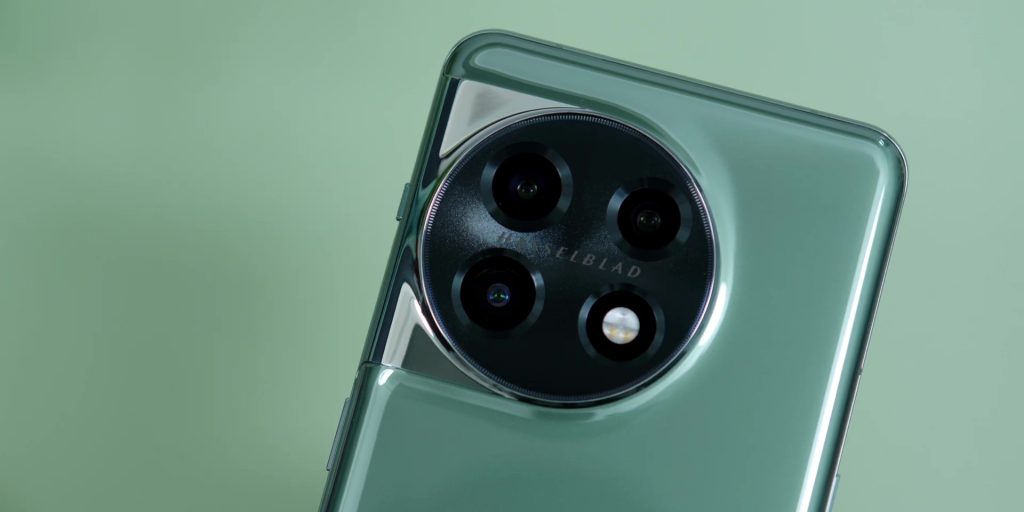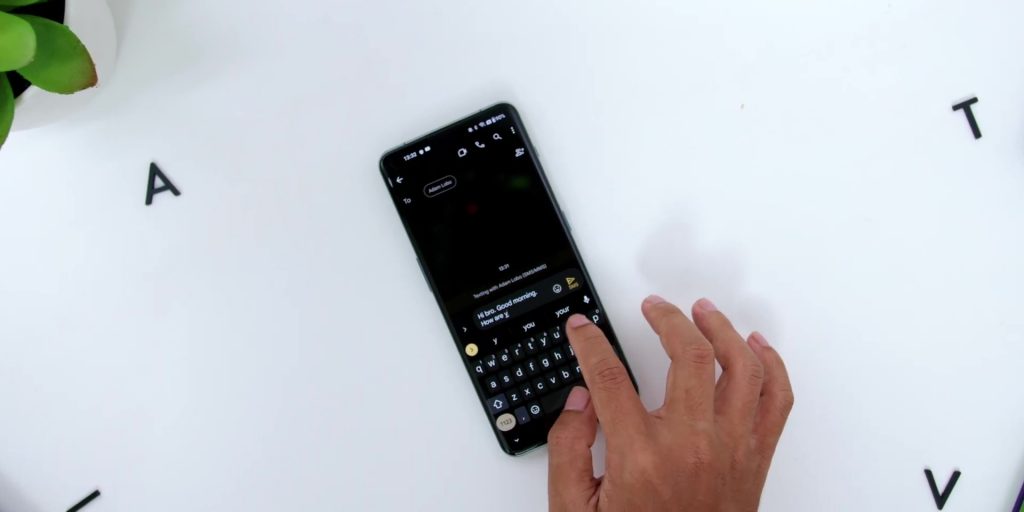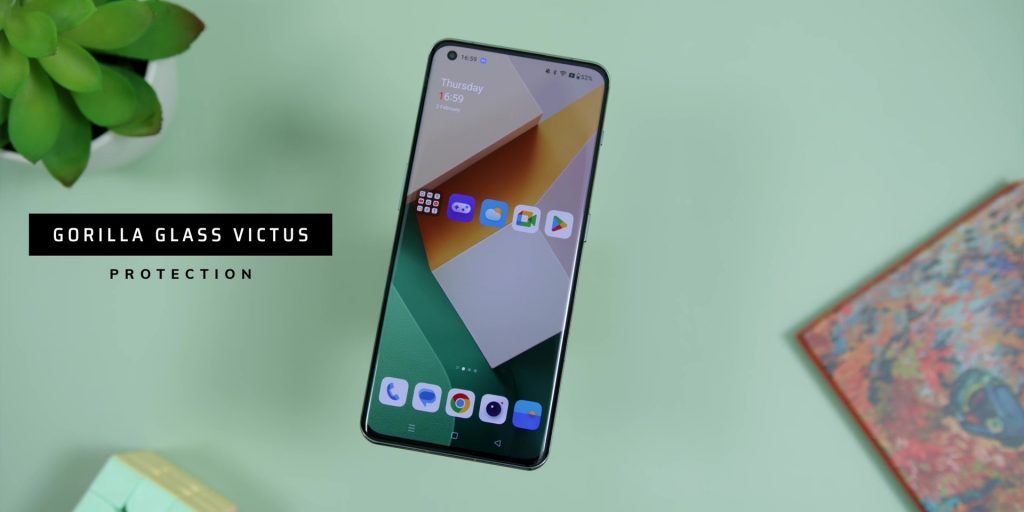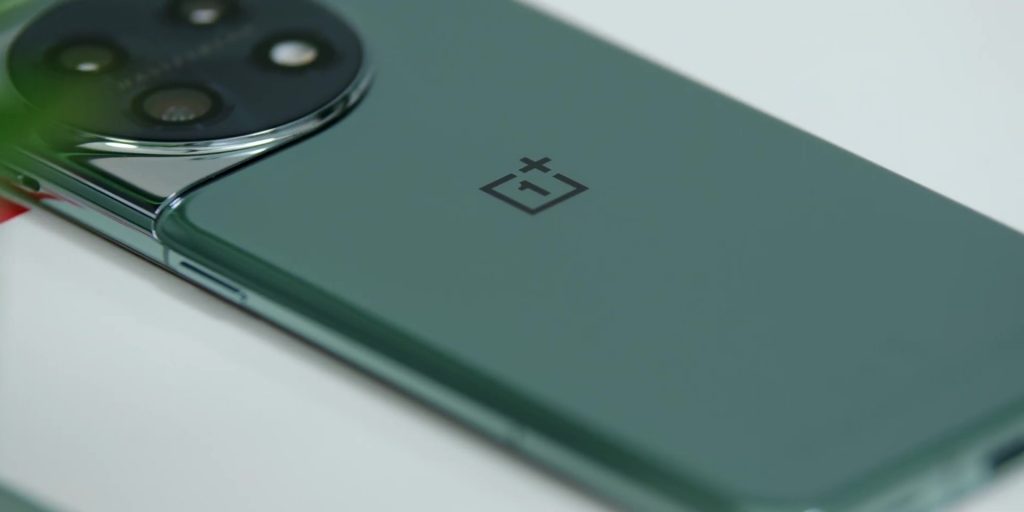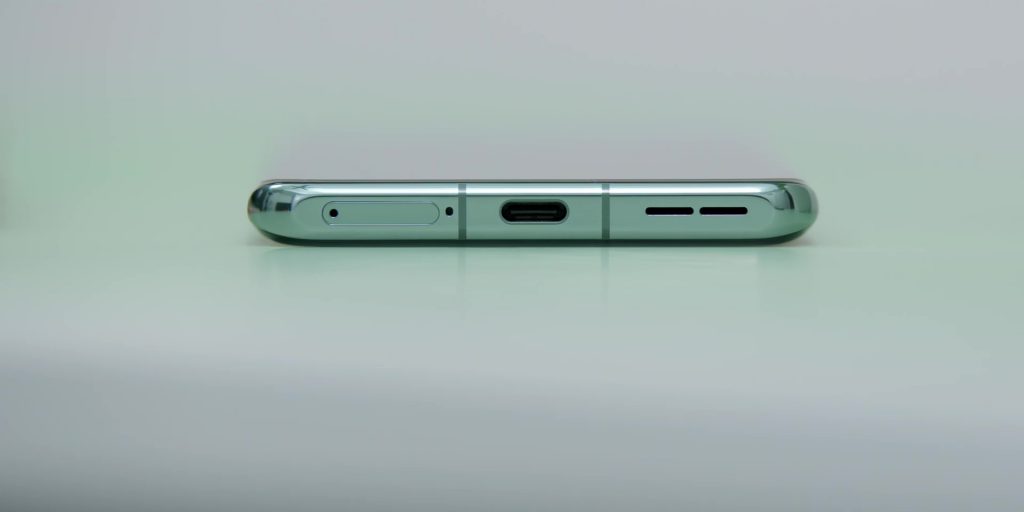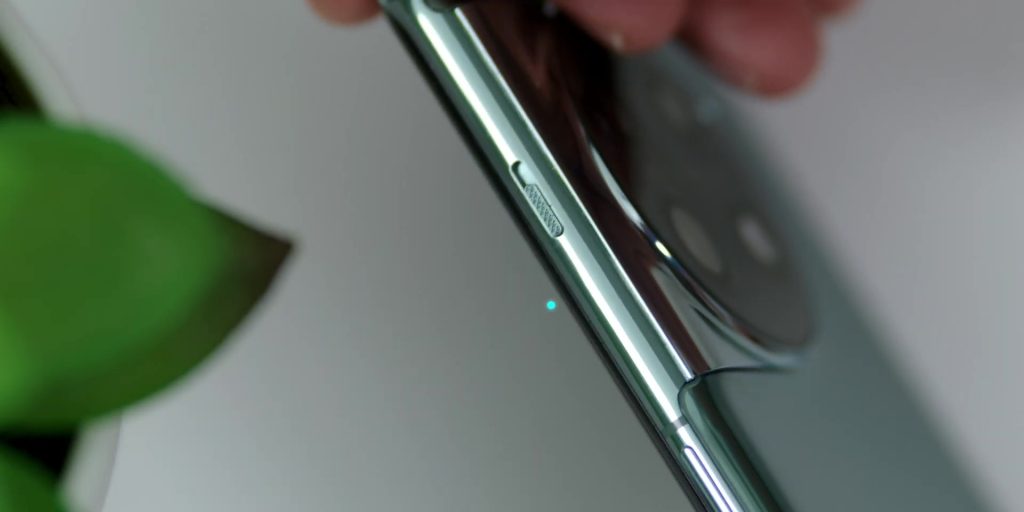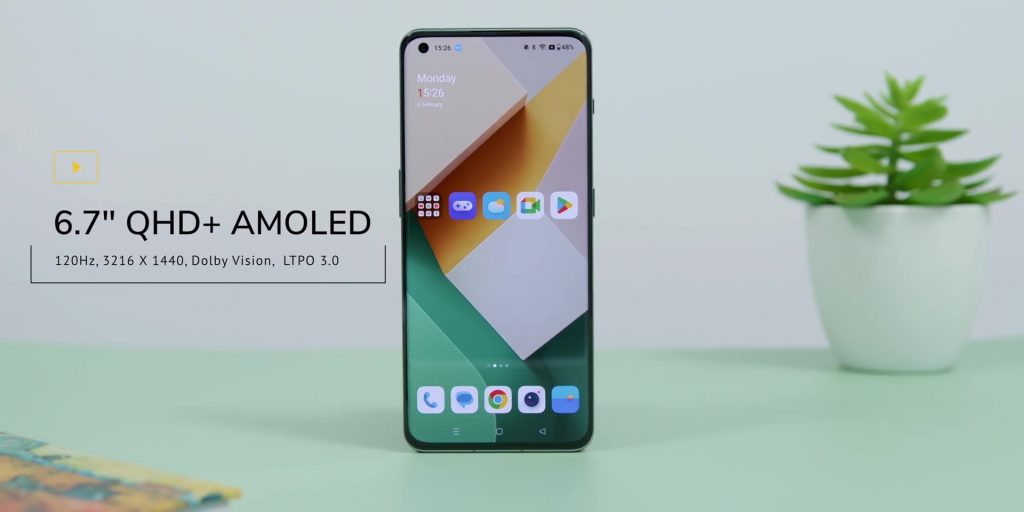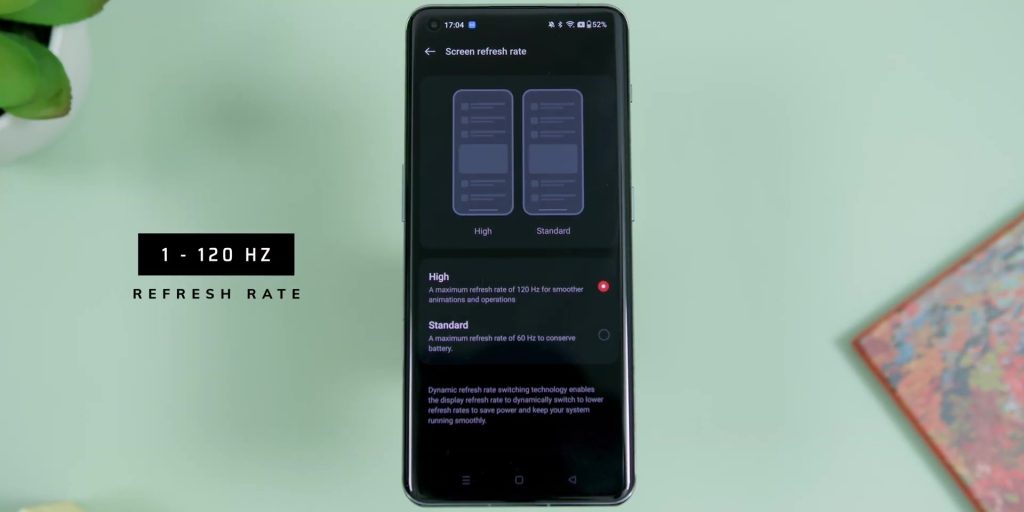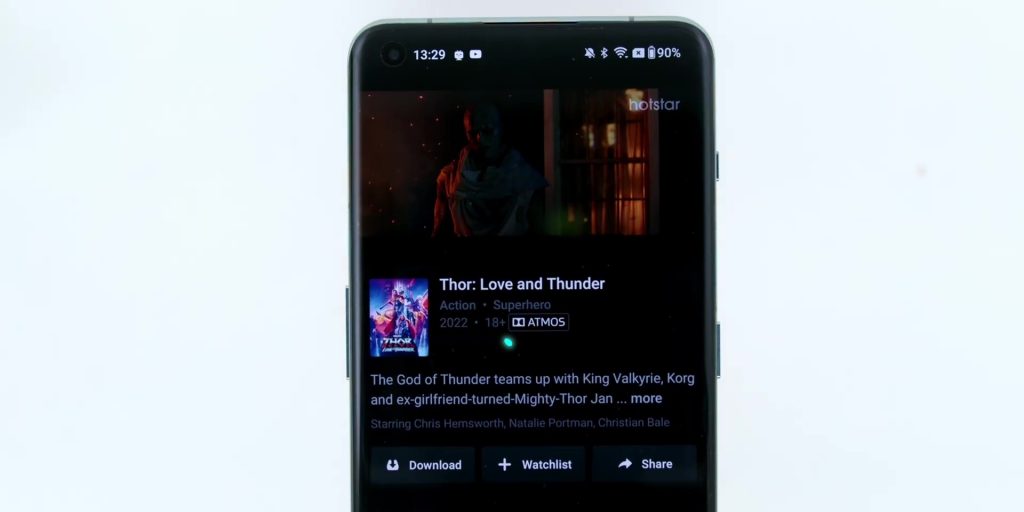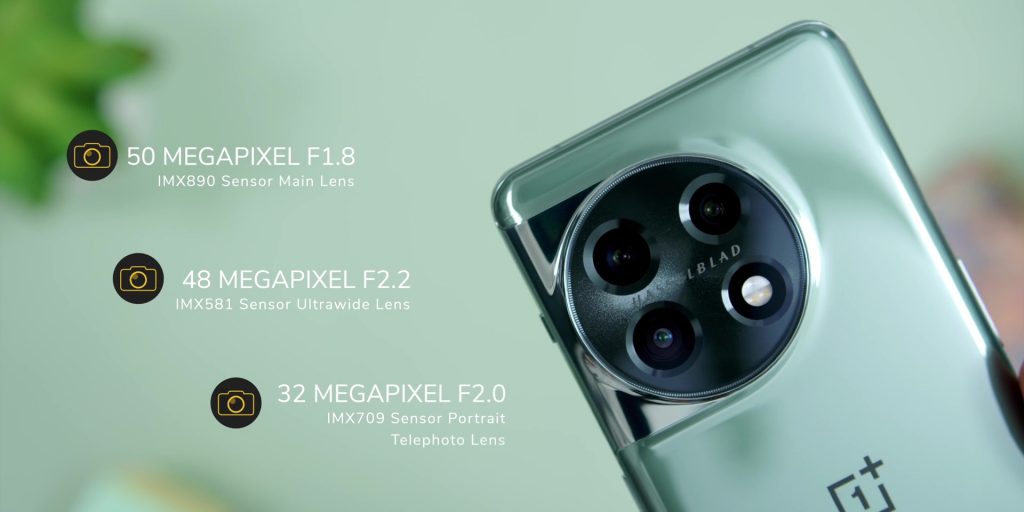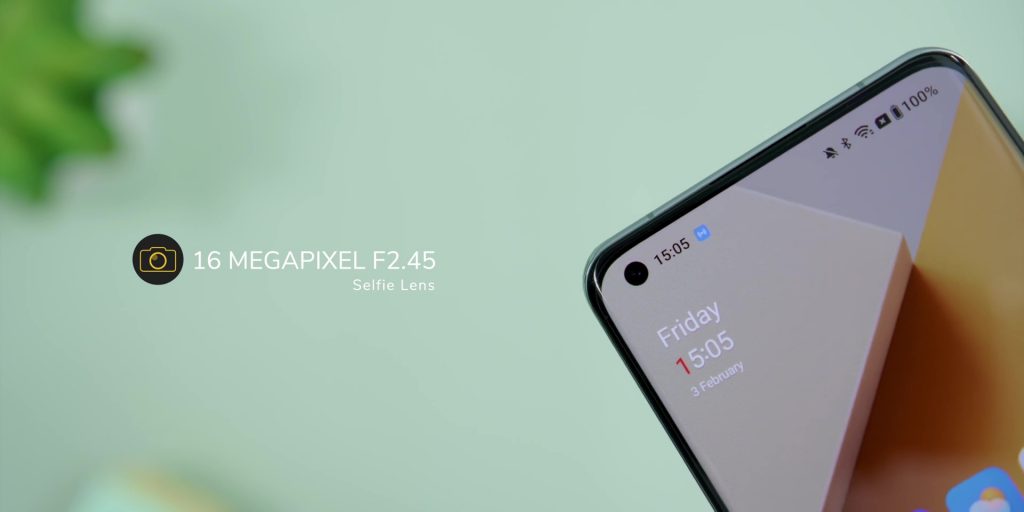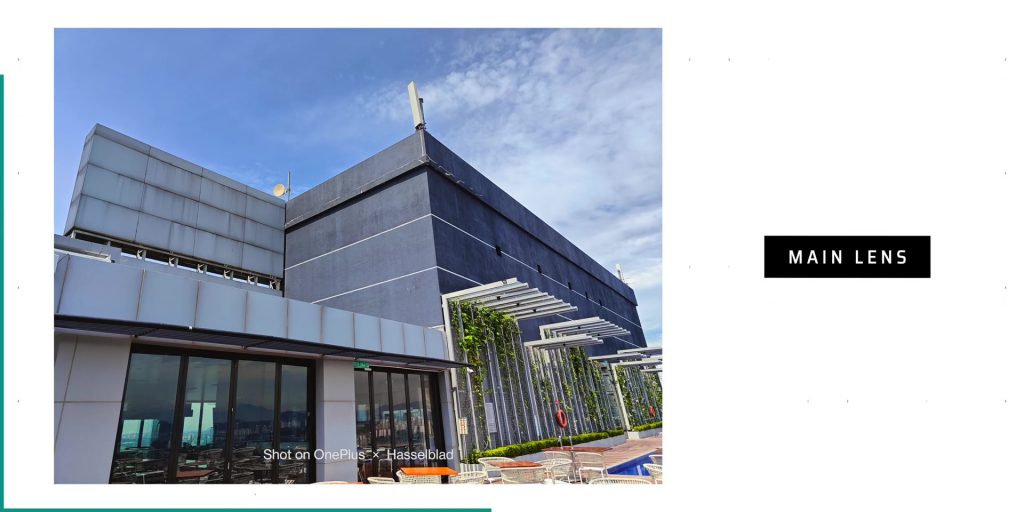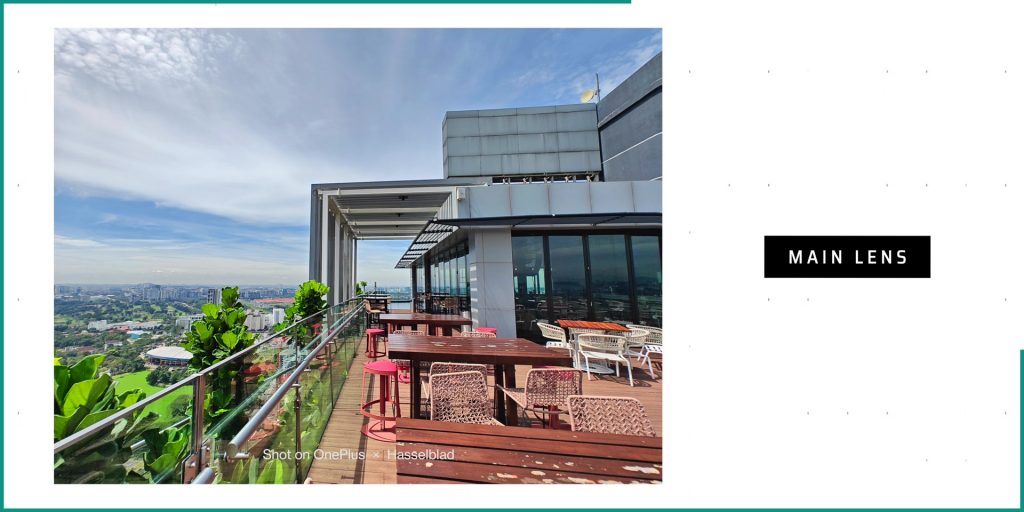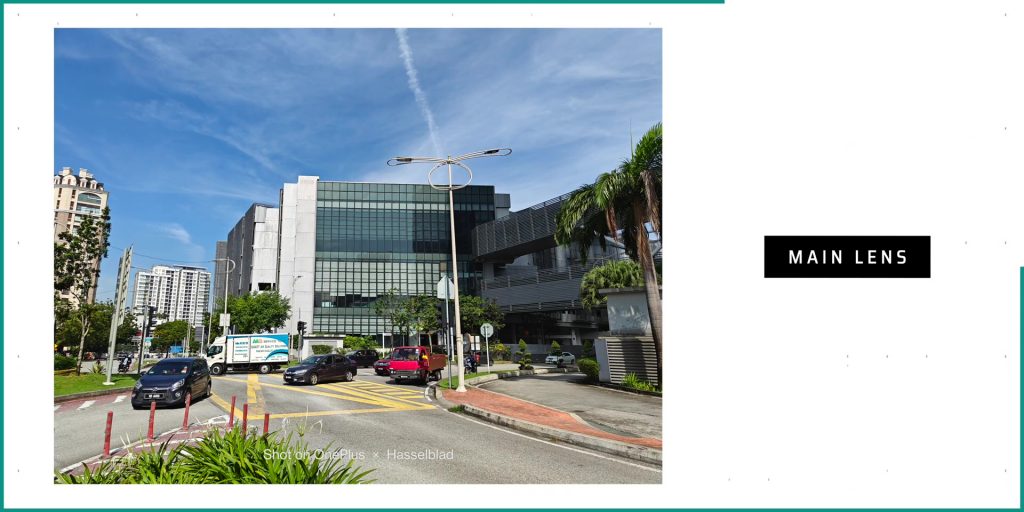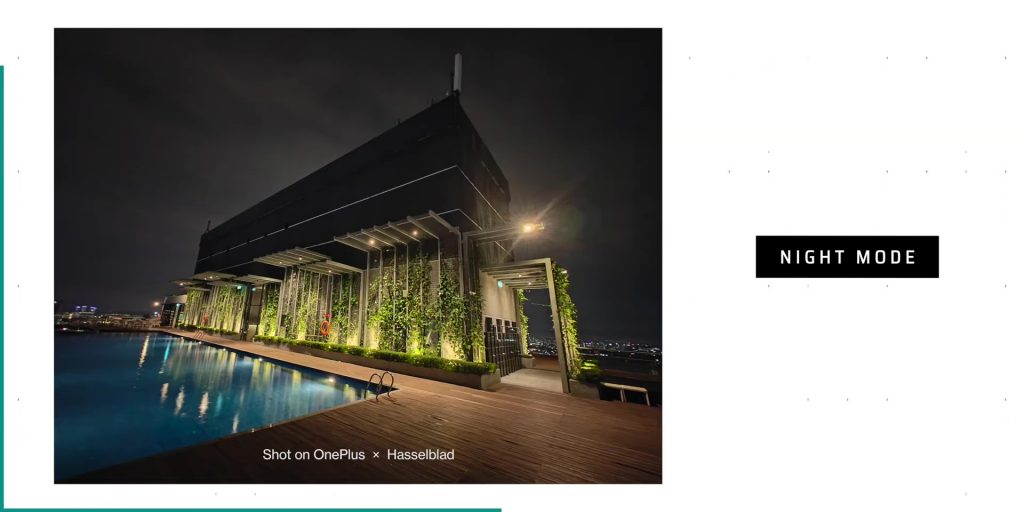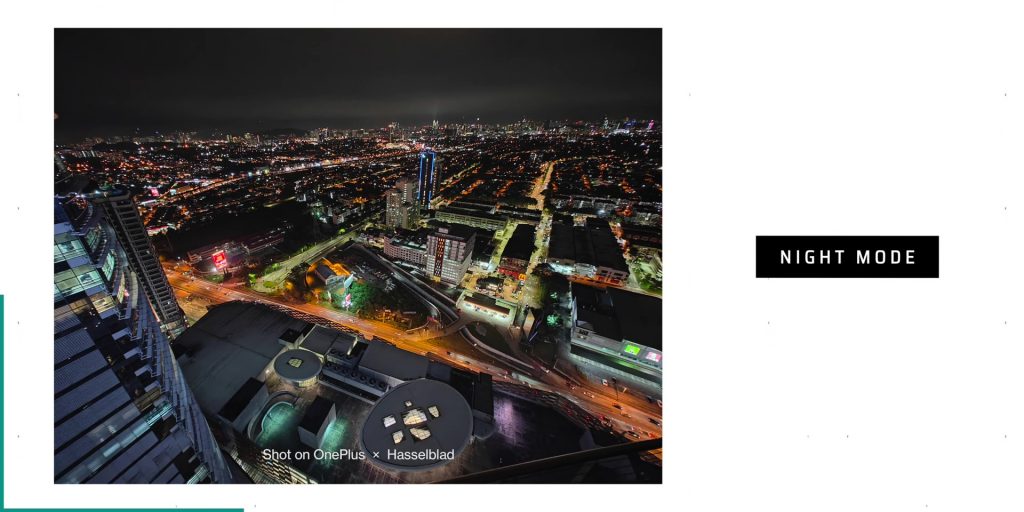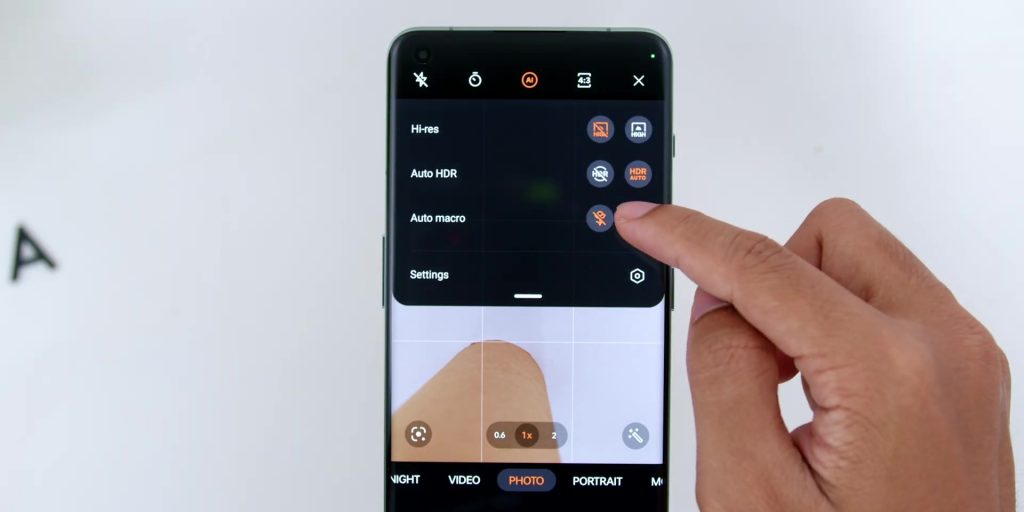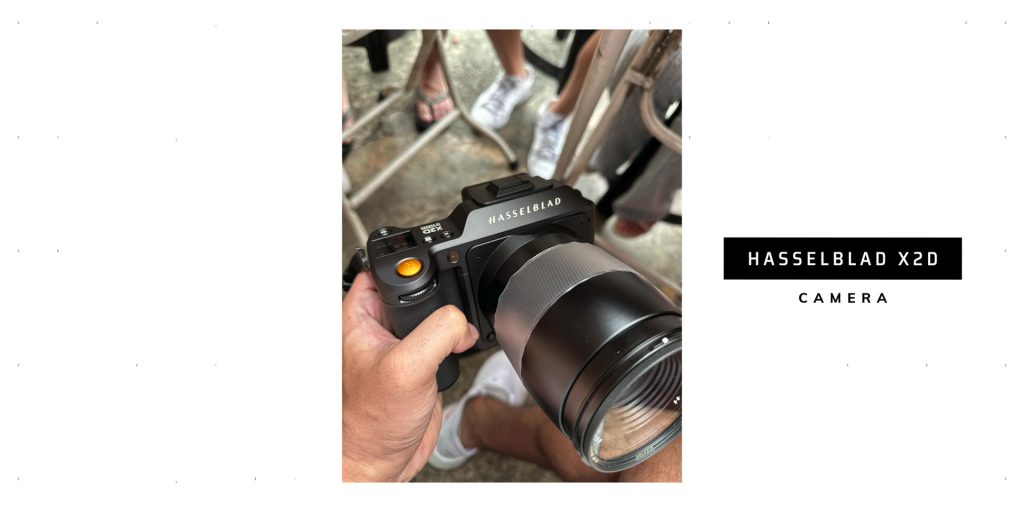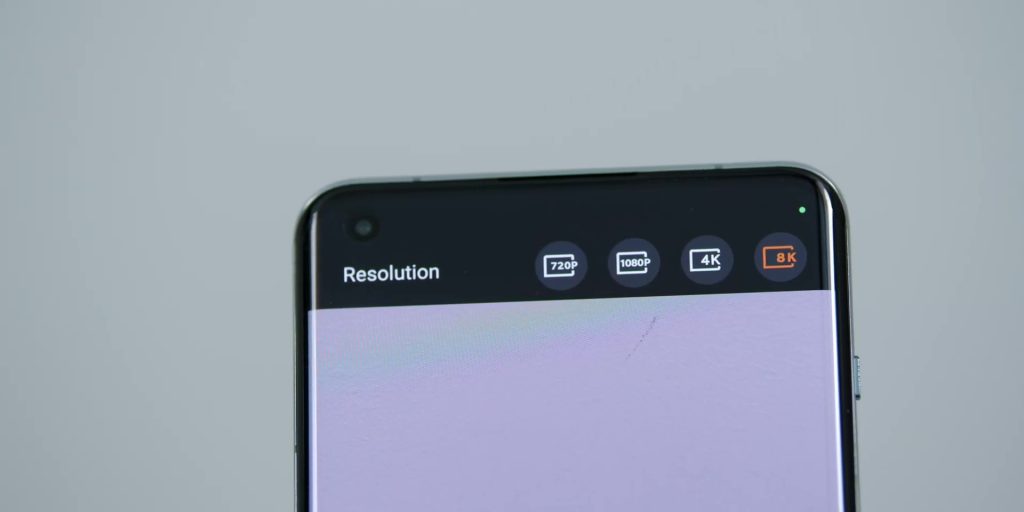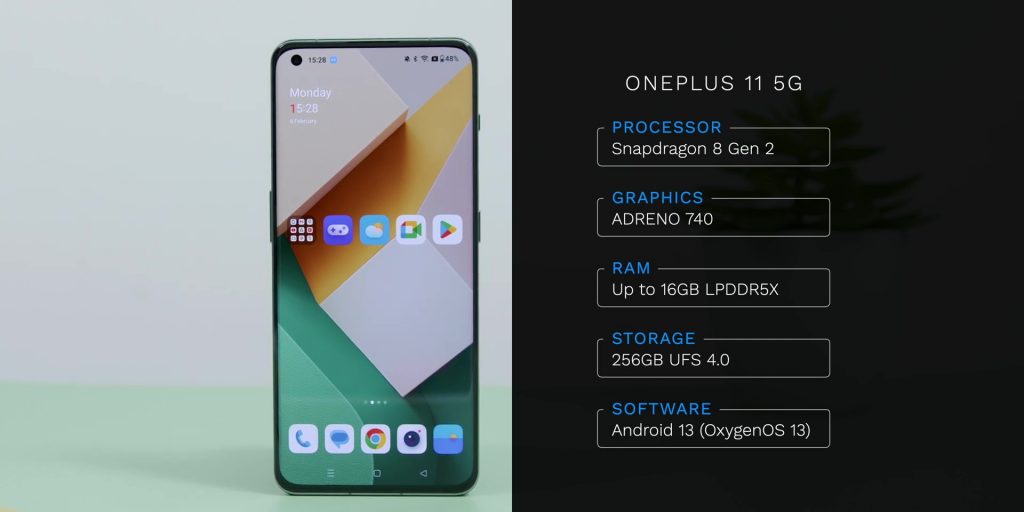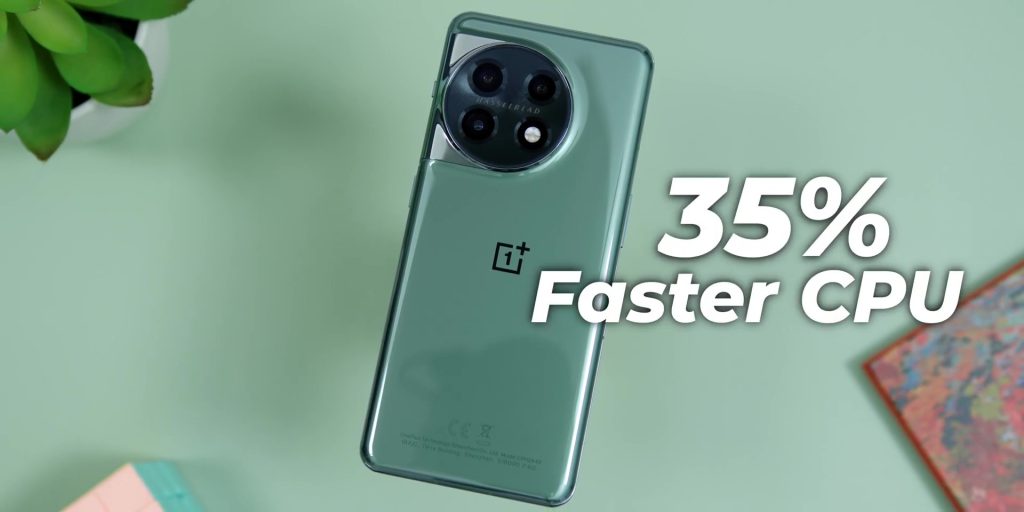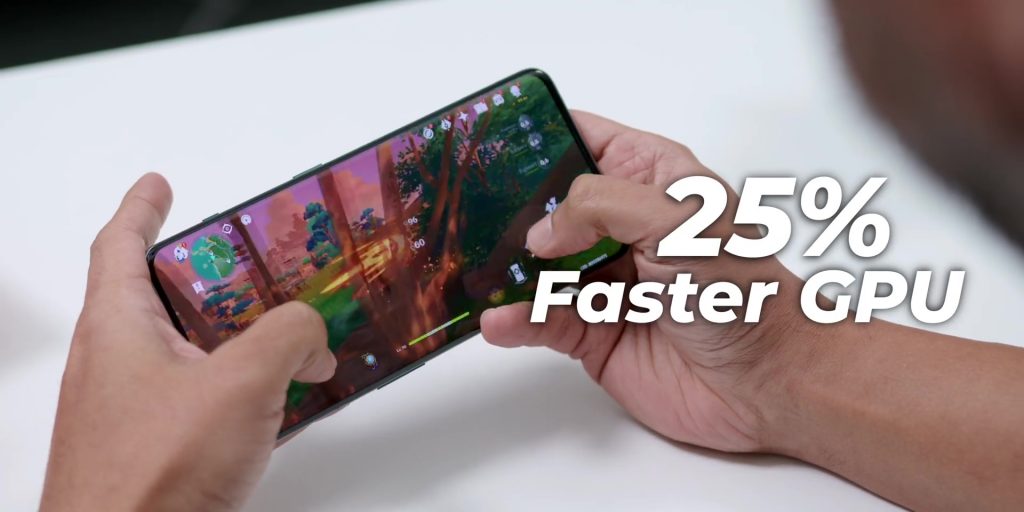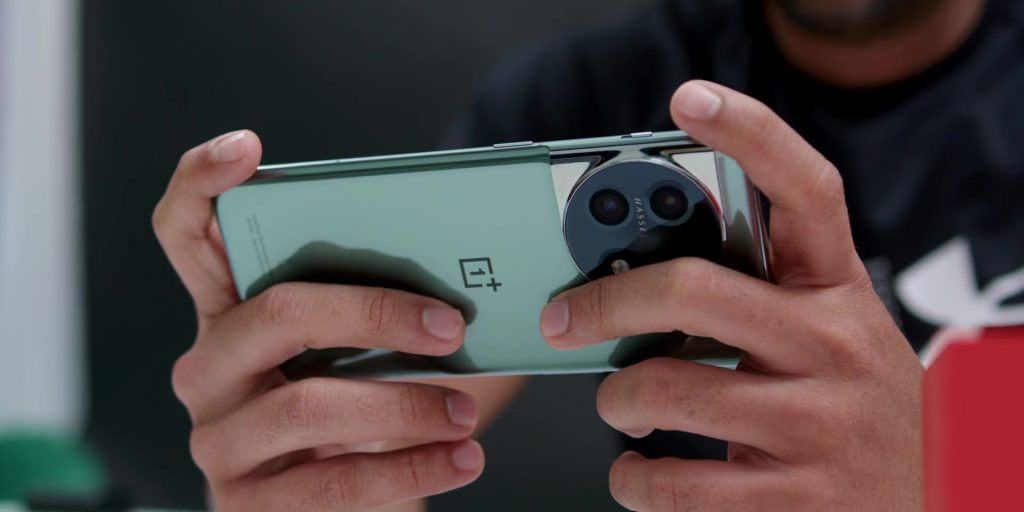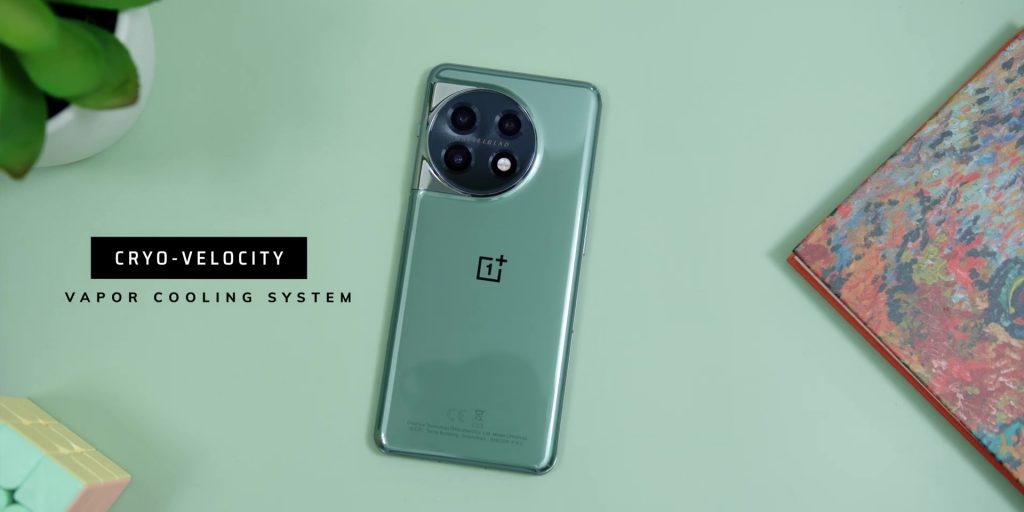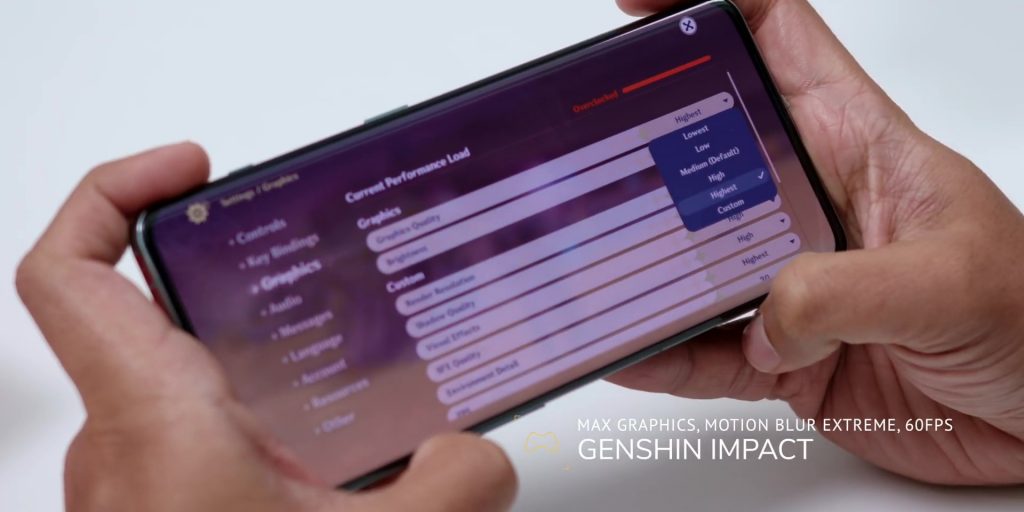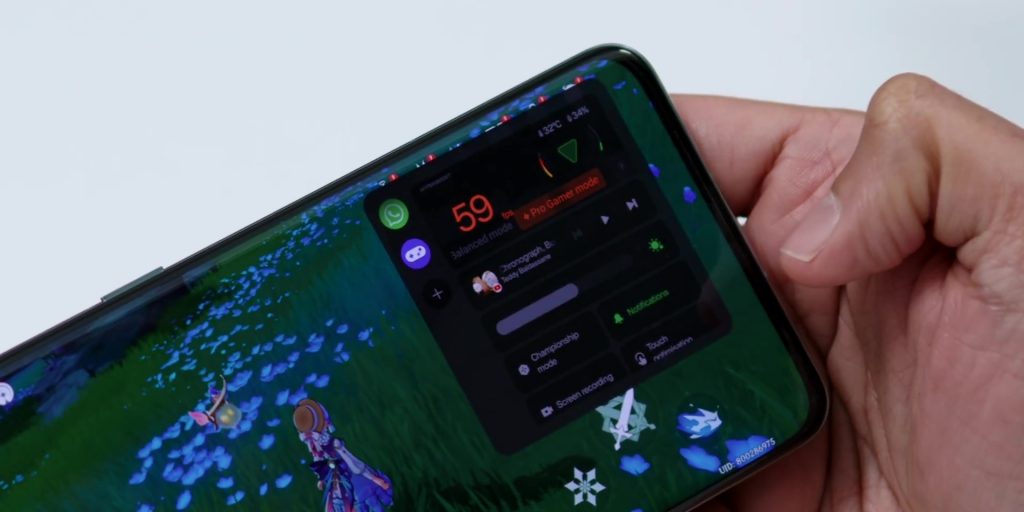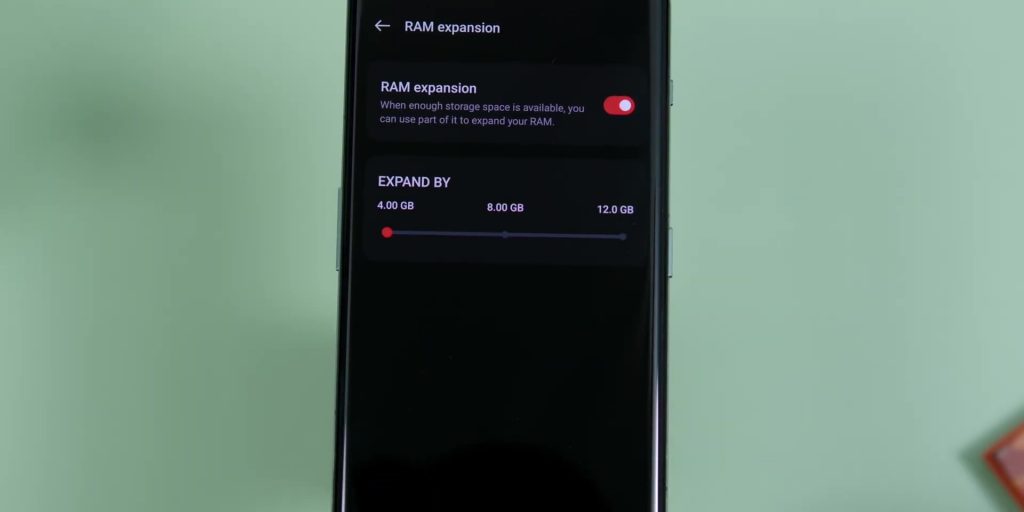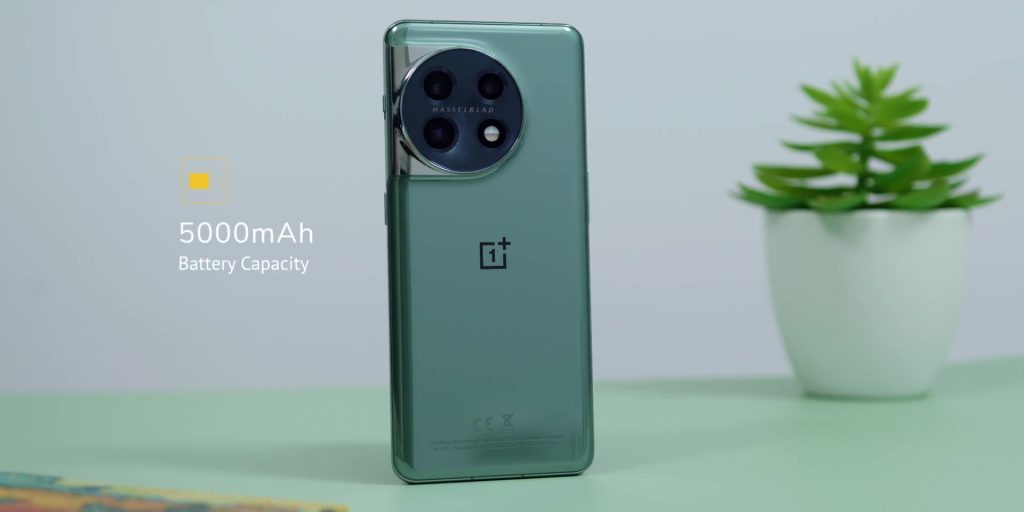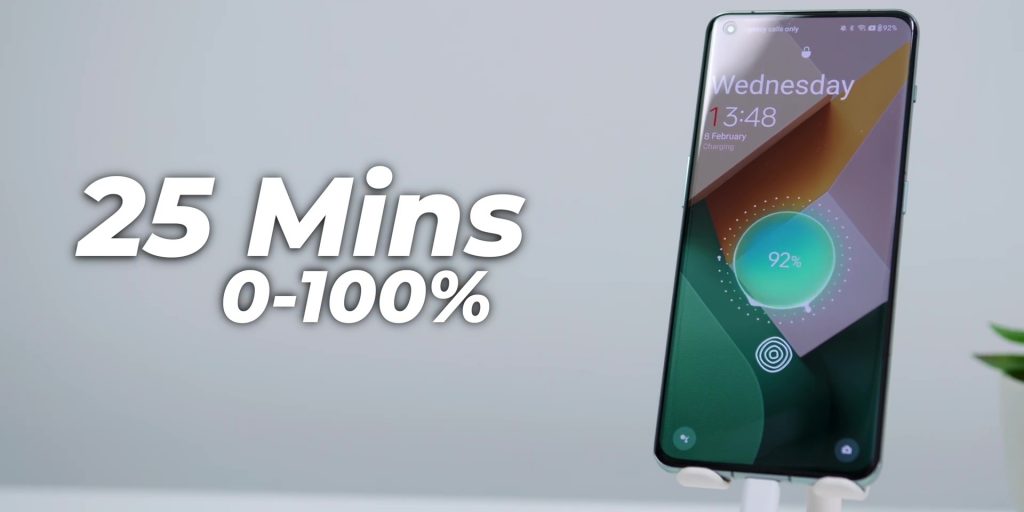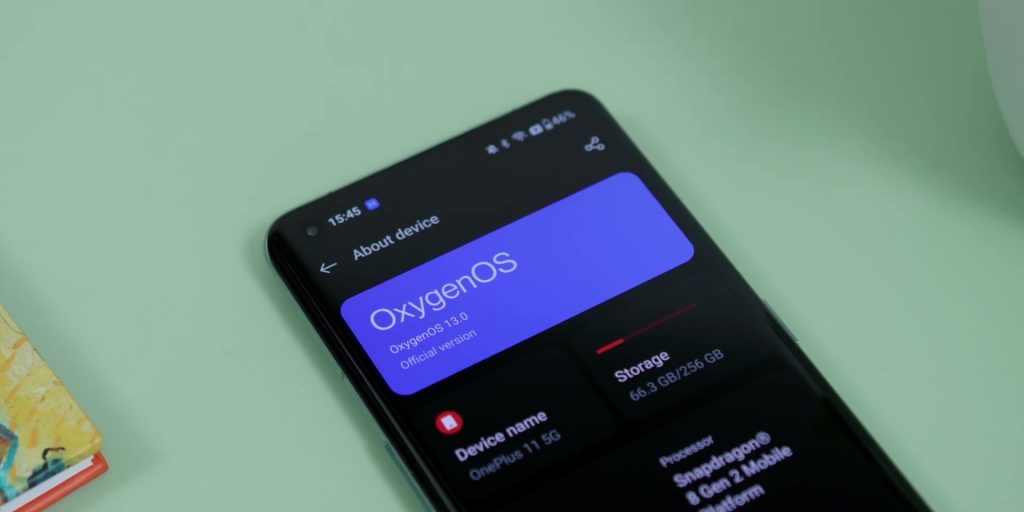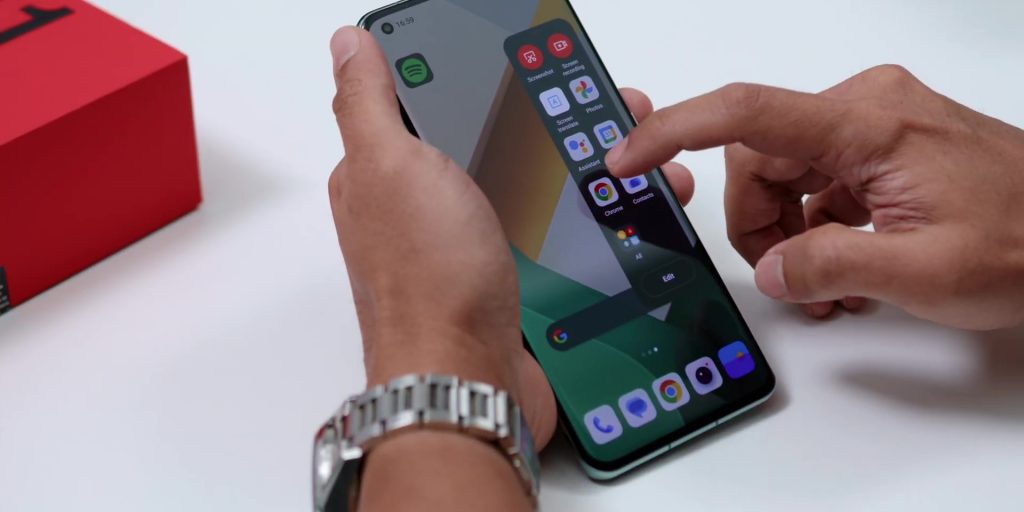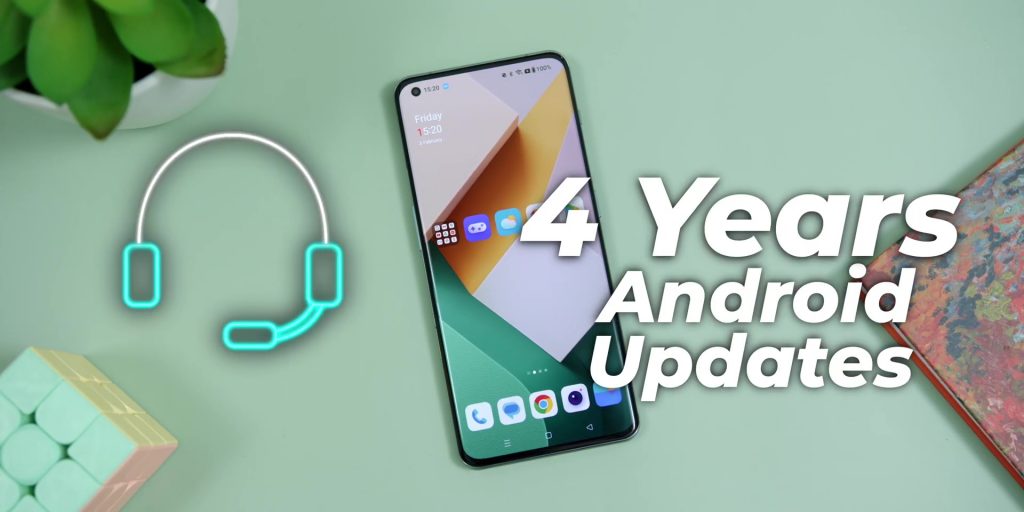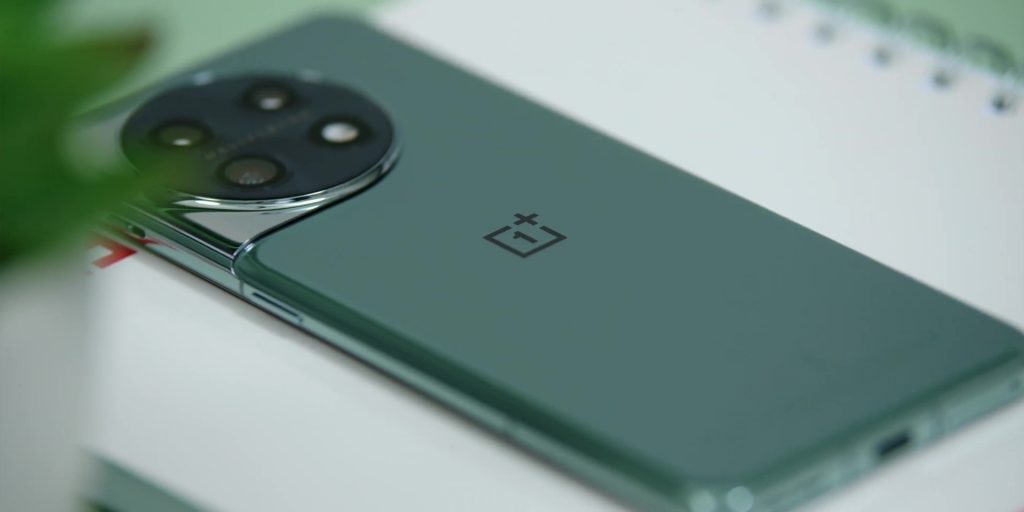This is the OnePlus 11 5G, it has all the flagship-level specs, a beautiful camera capturing capabilities since the collab with Hasselblad is back, a beautiful screen, a sexy design, and the best part is that it doesn’t burn a hole in your wallet, as it is priced at only RM3,599. So in this video, I will help you make a purchase decision on whether or not this should be your pick in early 2023.
Design
Now, let’s start with the design because, like many of you who have said, when I posted the pictures of the phone on Instagram, it looked incredibly sexy.
The collaboration with Hasselblad is back as mentioned earlier, with its very clear Hasselblad branding on the camera bump and speaking of which, the good news is that it doesn’t wobble at all when you are typing the phone on a surface, which tends to be the case for most flagship smartphones these days.
And I just love how camera bump’s design compliments the glossy Eternal Green finish variant, but I have to say that I did prefer the finish of the other Titan Black since it had a matte finish, but in terms of color, this Eternal Green color was something that I appreciated the more I used the phone daily, especially since it compliments very well with the OnePlus Buds Pro 2 and more on my experience on this a little later.
Now, what’s more important than looking good? Well, it feels good in the hand because it is solidly built because of how the front Corning Gorilla Glass Victus and the back glass of Corning Gorilla Glass 5 meet in the middle of the frame, where it creates the dimension where it is not too rounded off but feels super comfortable in the hands.
As for the ports and buttons, other than the usual USB-C port at the bottom, the dual SIM card slot is also over there.
Then the volume rocker is on the left, then on the right hand side, other than the power button, there is also the return of another very old nice friend, which is the Alert Slider! So thank you OnePlus, for bringing this back.
And during my daily usage, everything felt very much at home, with proper placement of the buttons and of course the Alert Slider all within proper reach.
Display
Next, turning over to the front, here is where you will find the gorgeous 6.7” QHD+ AMOLED screen, which is an LTPO 3.0 display panel.
And if you are not familiar with high refresh rate LTPO panels, it is when the screen is capable of automatically switching between 1-120Hz depending on what you are doing on the screen, which is a great feature to extend your battery life and more on my battery usage a little later.
The in-display fingerprint sensor was very responsive with customized animation and sound, which was a nice little touch.
And the screen goes super bright up to 1300 nits, it also has a perfect balance of contrast and overall vibrancy, whether or not you are using the phone for daily scrolling at a website or social media and watching videos as well.
Speaking of watching videos, if you love to binge videos on your phone, the good news is that not only is the display very accurate as well, but the phone also has Dolby Vision and Dolby Atmos for the speakers of the phone and OMG! I tried watching the entire “Thor: Love and Thunder” on Disney+ Hotstar when I was in the studio, and the experience was… *mind blown*
Now speaking of headphones, I found the OnePlus Buds Pro 2 to be the best companion to the overall experience too, as the sound quality was really excellent, thanks to its MelodyBoost Dual Drivers.
So whether or not you are watching movies through the amazing Spatial Audio, making crystal clear calls, listening to music, where thanks to the Dynaudio’s turning, the overall audio experience was as flagship-level quality as it can be, with the Noise Cancellation turned on.
Cameras
Onto the next topic, which I am sure most of you are here for, which is the camera systems:
- The main sensor is a Sony-sourced 50MP f/1.8 aperture, which is an IMX890 sensor with OIS,
- a 48MP f/2.2 aperture IMX581 Ultrawide lens with 115-degrees field of view
- and a 32MP f/2.0 IMX709 Portrait Telephoto lens
- Then the front camera is a 16MP f/2.45 lens
Now, sure, it’s not a 200MP camera like most smartphone makers does, so at this point of time, maybe two or three, but the smarter of us knows that it’s not all about the megapixel count, where the quality really boils down to how the software and algorithm work together with the hardware to create the final picture.
And here I am happy to report, because OnePlus definitely delivers in the camera department. Just take a look at these pictures!
If you blind-tested me and said that this was from a OnePlus smartphone, or even from a smartphone, I would not even believe you, to the point that I had to put the watermark just to be sure.
As you can see, the pictures were super sharp, crisp, vibrant enough to excite the eyes but not too unrealistic, with great dynamic range. And during the Portrait mode, the edge detection was even nicer, especially on pets too, and the Hasselblad color science on this was just… *délicieux*
Then photos at night were also lovely as well, with perfect balance of highlights and shadows without any noise on the darker areas.
And the best part is that this is true for all of the three sensors, where it was pretty consistent when it comes to the quality, so it’s not like OnePlus just focused on one of the lenses and added the rest of the cameras as an afterthought.
So whether or not it’s the Ultrawide lens, the Main lens, and even the Telephoto lens, it remained the good quality consistency with no signs of any color shifts when switching between those lenses
And let’s together give a moment of gratitude about the non-existence of a “dedicated” Macro lens, which a lot of other smartphones tend to do, where the Macro mode on this phone could be toggled on or off, and the results were WAAAAY better than a typical “dedicated” Macro lens, so bye bye Macro lens!
Then the front camera’s selfie shots, not only had super accurate skin tones and amazing subject-to-background blur, but the overall image had that nice lovely Hasselblad color and trust me, I have used and taken photos on the Hasselblad X2D camera before, and it was as close as it gets.
So yes, compared to how it was on the OnePlus 9, the pictures on this were hell of an improvement.
Then as for video, the rear camera records up to 8K 24 frames per second, where the video quality was super sharp and detailed, but of course, I used the 4K 30 fps recording all the time during my usage, and the quality was still very pleasing to the eye, with fantastic video stabilization.
Performance
Alright, so the next highlight would be the phone’s performance using it daily, because it comes with the latest and greatest Snapdragon 8 Gen 2 processor, with up to 16GB of LPDDR5X RAM, and 256GB of UFS 4.0 storage.
The Snapdragon 8 Gen 2 CPU is said to be 35% faster and 40% more power efficient, while the GPU is also 25% faster and 45% more power efficient.
Based on my usage, it is true, but we all know how some Snapdragon chipsets are right? Especially for a flagship like this, where Snapdragon chipsets in the past usually heats up pretty quickly to give you that extra boost of performance.
But the good news is that the phone is equipped with the Cryo-Velocity Vapor cooling system to thermally dissipate the heat better.
Which according to OnePlus, it is up to 92% of improvement, which is hell a lot of improvement, according to their in-lab testing. And in my own testing, the phone does seem to be cooler than other phones that I have tested within the same chipset, especially when playing demanding games like Genshin Impact.
And speaking of Genshin Impact, how about gaming on the smartphone? Because here is where I was totally blown away by the gaming performance of the phone because not only the graphics were at maximum settings at 60 frames per second on Genshin Impact. This was the first time that gaming was super smooth on any Android smartphone, where it ran without any micro stutter or any signs of lag, even with the Motion Blur set to Extreme.
Now there were no overheating issues for continuous gaming for about 30 minutes. Now of course with the highest settings, you can expect a higher battery drain as well, so I would recommend the settings to be at Medium to still get the best gaming experience on the phone.
Now another quick tip is for you to swipe at the top right of the screen to toggle the Pro Gamer mode which automatically adjusts the best balance settings of the game accordingly as well.
Then the RAM also has the incredibly cool feature called the RAM-Vita, to allocate RAM to resource-heavy tasks like the camera system or even the gaming like earlier, so you will have a smoother experience whether or not it is gaming like I mentioned, switching between apps, and yes, in my case using the phone daily as a smartphone.
So yes, overall I did not come to any issues of lags or stuttering during heavy multitasking.
When it comes to the battery, the phone has a 5,000mAh of battery, and the sweet sauce on top is the 100W SUPERVOOC charging speed. And this means that it only takes 25 minutes to charge from 0 to 100%! So I’ll totally take that! And the charger comes inside of the box as well.
And when it comes to my battery life using it daily, I was averaging a battery life of 7 hours and 29 minutes of screen on time when I was at 10% battery with Dark Mode turned on with the maximum resolution of QHD+, so you will get even more battery life if you lower down the resolution, but for me, I just prefer to enjoy the display with its sharp resolution even more, so battery life on here, with my current test daily on that QHD+ was plenty for me.
Now, whether or not you are familiar with OnePlus’s OxygenOS, I personally feel that you will enjoy it as much as I did, it is based on Android 13, and the overall UI is snappy, smooth, and you can do quite a lot of stuff, where it’s built on the stock Android experience, so it is very familiar but with some cool added features.
Now, one particular feature that I really love is the Always-On Display. Yep, you might be wondering, wait what? “That has been around for ages Adam!” Well this one is cooler!
So there are some custom animations that actually move the Always-On Display and have different animations based on things like time of the day or even temperature. And you can actually display apps as a full on the widget on the Always-On Display as well. Now this means that you can have full control without needing to open your main screen, which was surprisingly quite useful.
Then another feature is the Side Taskbar. Now you have to think of it as a drawer to keep your favorite stash of things. So you need to drag in your most used apps and it is easily accessible no matter what app is on your screen. All you have to do is to give it a swipe and press the app you want and this will open a floating window and you can even drag it out and open in Split Screen mode and the drawer could also auto hide, so it won’t disturb you when you’re watching YouTube video on full screen for example.
And another great thing about the software is OnePlus’ commitment for 4 years of Android updates and 5 years of security patches so if you’re planning on sticking on a single phone for a really long time like this, security and updates are very important to make sure that you keep receiving the latest and greatest, and the safest that Android has to offer.
Conclusion
So summing all of this up, OnePlus is definitely going back on track where they are going back to its roots to giving the best, especially in terms of the bang for the buck. So if you’re looking for a brand new flagship which checks all the right boxes, this should be on your list!

